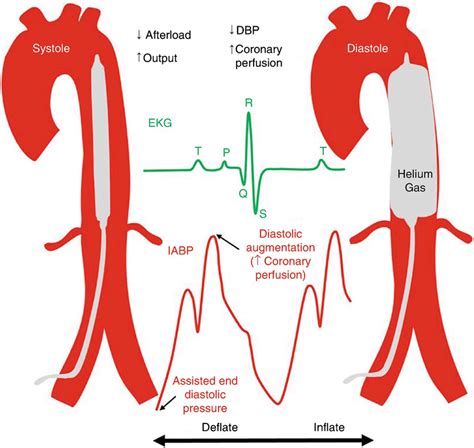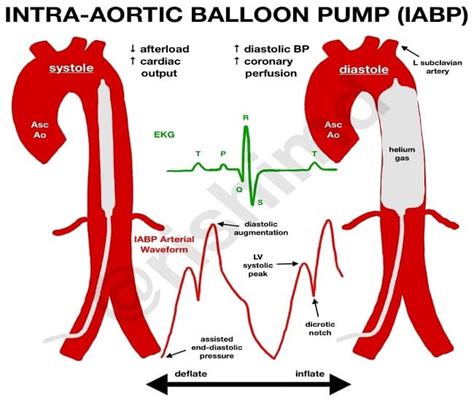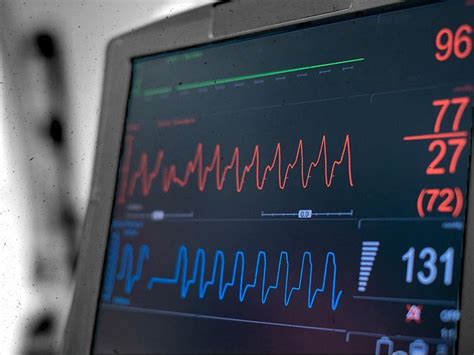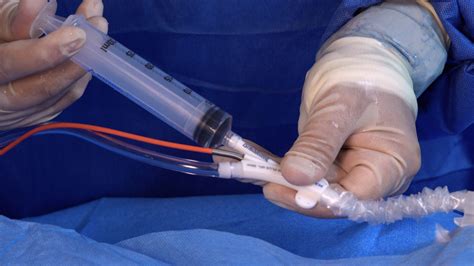Intro
Discover Intra-Aortic Balloon Pump Therapy, a lifesaving cardiac support treatment using counterpulsation, hemodynamic monitoring, and vascular access to enhance myocardial perfusion and reduce cardiac workload.
Intra-aortic balloon pump (IABP) therapy is a life-saving medical treatment that has been widely used for decades to support the heart in critical situations. This therapy involves the insertion of a balloon pump into the aorta, the main artery that carries blood from the heart to the rest of the body. The IABP helps to increase blood flow and reduce the workload on the heart, which can be especially beneficial for patients with severe heart conditions, such as heart failure, cardiogenic shock, or myocardial infarction. The importance of IABP therapy lies in its ability to provide temporary support to the heart, allowing it to recover from a critical situation and potentially avoiding the need for more invasive and risky treatments.
The use of IABP therapy has become a standard practice in many hospitals and medical centers around the world. It is often used in emergency situations, such as when a patient is experiencing a heart attack or is in cardiogenic shock, which is a condition where the heart is unable to pump enough blood to meet the body's needs. IABP therapy can help to stabilize the patient's condition, allowing for further treatment and potentially improving outcomes. In addition to its use in emergency situations, IABP therapy is also used in planned surgical procedures, such as coronary artery bypass grafting (CABG), to provide support to the heart during the operation.
The mechanism of IABP therapy is based on the principle of counterpulsation, where the balloon pump inflates and deflates in synchronization with the heart's natural rhythm. During diastole, the period when the heart is relaxing and filling with blood, the balloon pump inflates, which increases blood flow to the coronary arteries and reduces the workload on the heart. During systole, the period when the heart is contracting and pumping blood, the balloon pump deflates, which reduces the pressure in the aorta and allows the heart to pump more efficiently. This synchronized inflation and deflation of the balloon pump helps to increase cardiac output, reduce myocardial oxygen consumption, and improve blood flow to the vital organs.
Intra-Aortic Balloon Pump Therapy Overview

IABP therapy is typically used in patients who are experiencing severe heart conditions, such as heart failure, cardiogenic shock, or myocardial infarction. The therapy is usually initiated in an intensive care unit (ICU) or a cardiac catheterization laboratory, where the patient can be closely monitored and the IABP can be adjusted as needed. The insertion of the IABP is typically performed through the femoral artery, which is located in the groin area. The IABP is then advanced to the aorta, where it is positioned and inflated to provide support to the heart.
Benefits of Intra-Aortic Balloon Pump Therapy
The benefits of IABP therapy include increased cardiac output, reduced myocardial oxygen consumption, and improved blood flow to the vital organs. IABP therapy can also help to reduce the workload on the heart, which can be especially beneficial for patients with severe heart conditions. Additionally, IABP therapy can help to improve the patient's hemodynamic stability, which can reduce the risk of complications and improve outcomes.Working Mechanism of Intra-Aortic Balloon Pump Therapy

The working mechanism of IABP therapy is based on the principle of counterpulsation, where the balloon pump inflates and deflates in synchronization with the heart's natural rhythm. The IABP is typically set to inflate during diastole and deflate during systole, which helps to increase cardiac output and reduce myocardial oxygen consumption. The IABP can be adjusted to provide different levels of support, depending on the patient's needs. For example, the IABP can be set to provide 1:1 support, where the balloon pump inflates and deflates with every heartbeat, or 1:2 support, where the balloon pump inflates and deflates with every other heartbeat.
Steps Involved in Intra-Aortic Balloon Pump Therapy
The steps involved in IABP therapy include insertion of the IABP, positioning of the IABP, inflation of the IABP, and monitoring of the patient's condition. The insertion of the IABP is typically performed through the femoral artery, which is located in the groin area. The IABP is then advanced to the aorta, where it is positioned and inflated to provide support to the heart. The patient's condition is closely monitored during IABP therapy, which includes monitoring of blood pressure, heart rate, and cardiac output.Practical Examples of Intra-Aortic Balloon Pump Therapy

IABP therapy has been used in a variety of clinical settings, including emergency situations, such as heart attacks, and planned surgical procedures, such as CABG. For example, a patient who is experiencing a heart attack may be treated with IABP therapy to help stabilize their condition and improve blood flow to the heart. Similarly, a patient who is undergoing CABG may be treated with IABP therapy to provide support to the heart during the operation.
Statistical Data on Intra-Aortic Balloon Pump Therapy
According to statistical data, IABP therapy has been shown to improve outcomes in patients with severe heart conditions. For example, a study published in the Journal of the American College of Cardiology found that IABP therapy was associated with a significant reduction in mortality rates in patients with cardiogenic shock. Another study published in the Journal of Thoracic and Cardiovascular Surgery found that IABP therapy was associated with improved cardiac output and reduced myocardial oxygen consumption in patients undergoing CABG.Benefits and Risks of Intra-Aortic Balloon Pump Therapy

IABP therapy has several benefits, including increased cardiac output, reduced myocardial oxygen consumption, and improved blood flow to the vital organs. However, IABP therapy also carries several risks, including bleeding, infection, and vascular complications. The risks associated with IABP therapy can be minimized by closely monitoring the patient's condition and adjusting the IABP as needed.
Future Directions of Intra-Aortic Balloon Pump Therapy
The future directions of IABP therapy include the development of new technologies and techniques to improve the safety and efficacy of the therapy. For example, the development of smaller and more portable IABP devices may make it possible to use the therapy in a wider range of clinical settings. Additionally, the development of new materials and designs may help to reduce the risks associated with IABP therapy, such as bleeding and infection.Conclusion and Recommendations

In conclusion, IABP therapy is a life-saving medical treatment that has been widely used for decades to support the heart in critical situations. The therapy has several benefits, including increased cardiac output, reduced myocardial oxygen consumption, and improved blood flow to the vital organs. However, IABP therapy also carries several risks, including bleeding, infection, and vascular complications. To minimize the risks associated with IABP therapy, it is recommended that the therapy be used in a controlled and monitored environment, such as an ICU or a cardiac catheterization laboratory. Additionally, the development of new technologies and techniques may help to improve the safety and efficacy of IABP therapy.
What is Intra-Aortic Balloon Pump Therapy?
+Intra-Aortic Balloon Pump Therapy is a medical treatment that involves the insertion of a balloon pump into the aorta to support the heart in critical situations.
What are the benefits of Intra-Aortic Balloon Pump Therapy?
+The benefits of Intra-Aortic Balloon Pump Therapy include increased cardiac output, reduced myocardial oxygen consumption, and improved blood flow to the vital organs.
What are the risks associated with Intra-Aortic Balloon Pump Therapy?
+The risks associated with Intra-Aortic Balloon Pump Therapy include bleeding, infection, and vascular complications.
We hope this article has provided you with a comprehensive overview of Intra-Aortic Balloon Pump Therapy. If you have any further questions or would like to share your experiences with IABP therapy, please comment below. Additionally, if you found this article informative, please share it with others who may benefit from this information.
